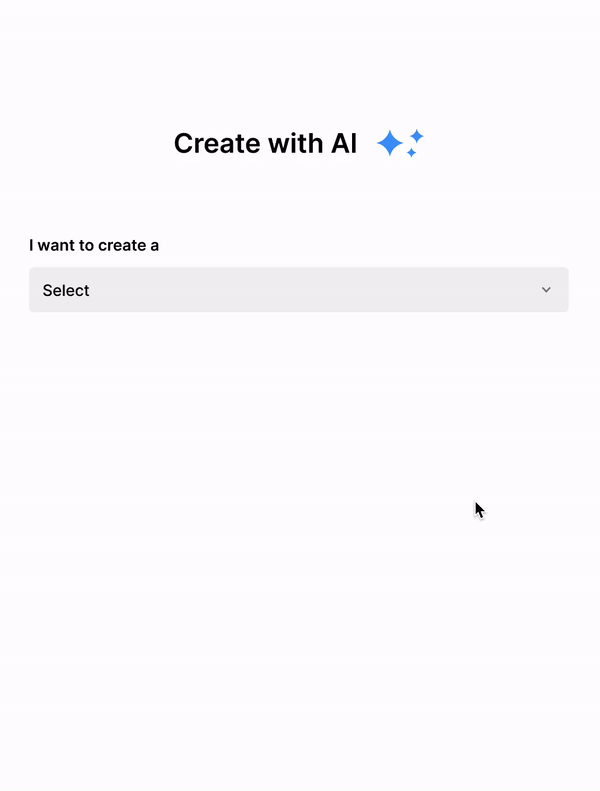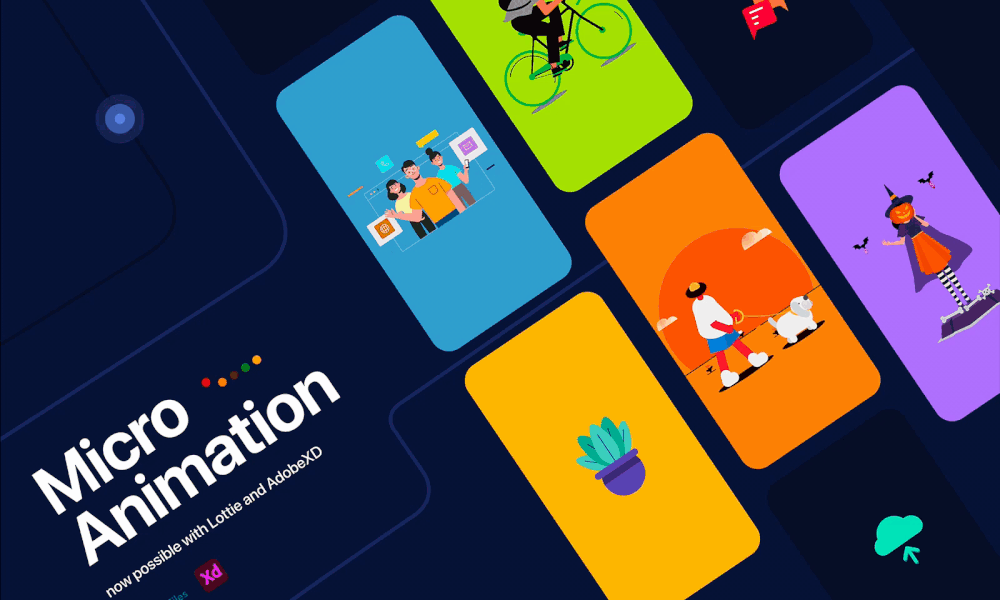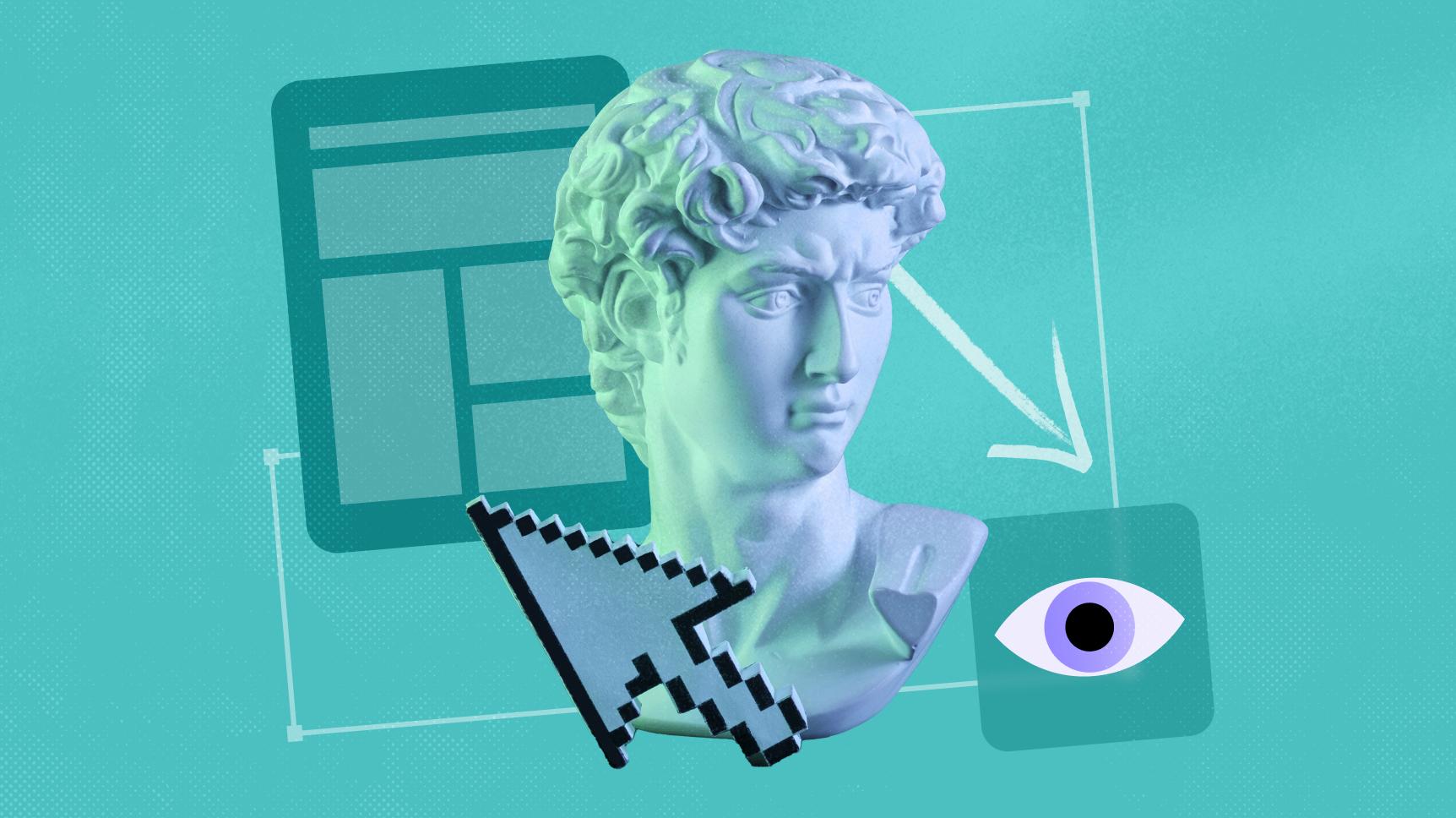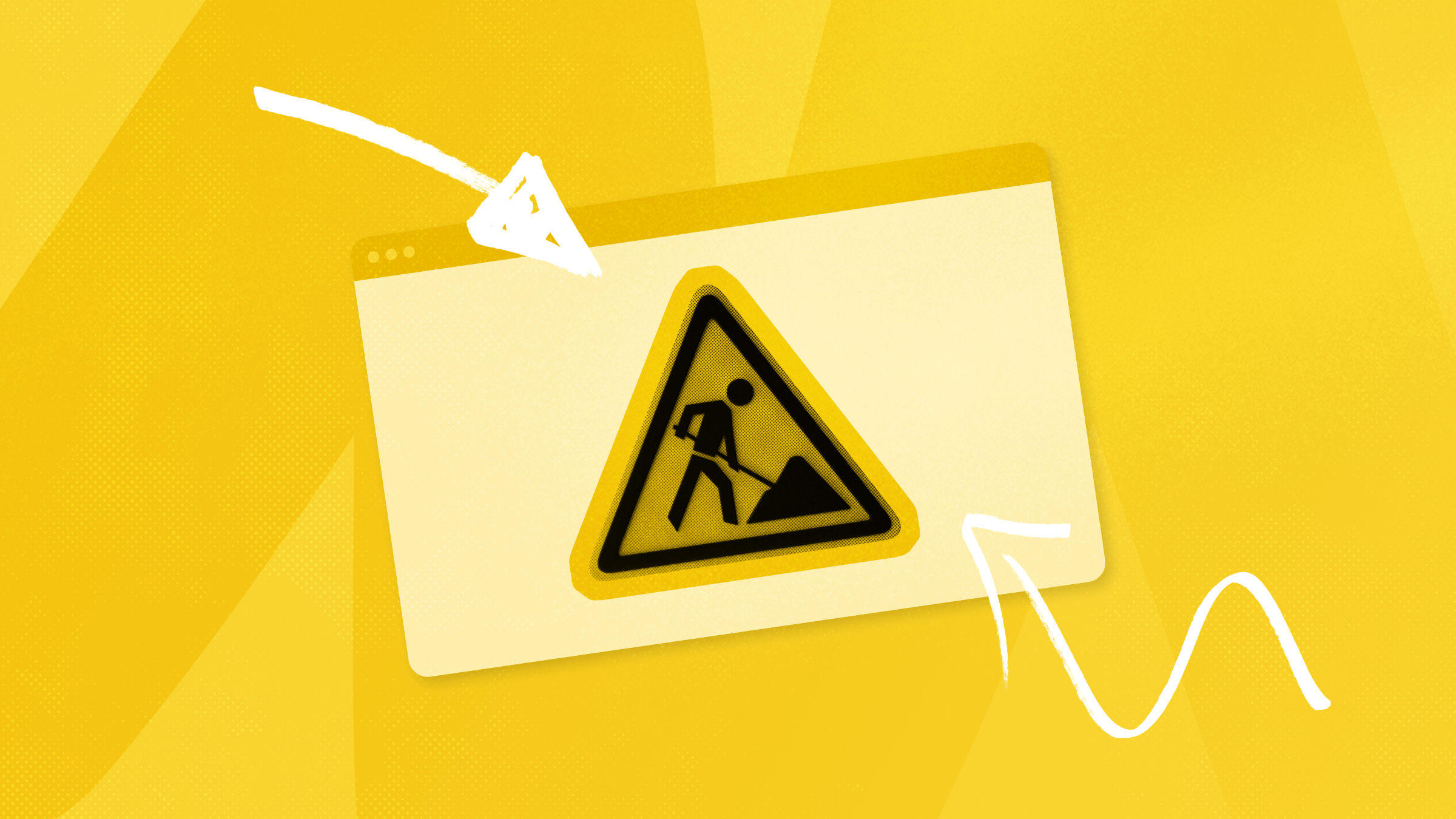Ready to step into the future of web design? From the evolution of AI to prioritizing the user experience, discover how the top web design trends of 2024 are reshaping the online experience.

As we dive headfirst into 2024, the world of web design is facing a thrilling evolution. With new tools, technology, and trends constantly emerging, the creation and consumption of online content are increasing exponentially. For web designers and developers, this means it’s no longer just about keeping up but setting the pace for the future of UX and UI.
From AI personalization and psychology-driven product design to immersive 3D interfaces and animated cursors, this year’s web trends will redefine online experiences and prioritize the user experience. The future of web design is here, and it’s time to embrace the change! Join us as we explore the top web design trends for 2024, where user engagement takes the spotlight.
1. Experimental Navigation
Static landing pages are so last year! In 2024, designers are pushing the boundaries of website navigation and exploring more creative ways for users to interact with website menus.
“In 2024, we’re seeing designers exploring more creative ways to guide users through websites,” says Marek Štrba, UX researcher at UXtweak. “We love the experimental navigation trend, as it adds an element of surprise, increases engagement, and can express the creativity of the brand or business.”
Take this example from the US-based agency Off Center Design, which keeps the design sleek and simple while getting the point across in a visually striking way.
Instead of the user having to click through various pages, information appears as they scroll. There are just two buttons – both leading to a ‘contact us’ page – and a couple of social media links. It’s engaging, entertaining, and shows what the team can do.
If you want your website to stand out in 2024, get experimental with your navigation to guarantee a more memorable and dynamic experience for your users.
2. Animated Cursors
Cursors are crucial elements of any website. They’re visual cues that show users the position of their mouse and how to interact with your website by selecting text, clicking buttons, or scrolling sidebars. However, web designers are now blending functionality with fun, keeping us captivated with animated cursors.
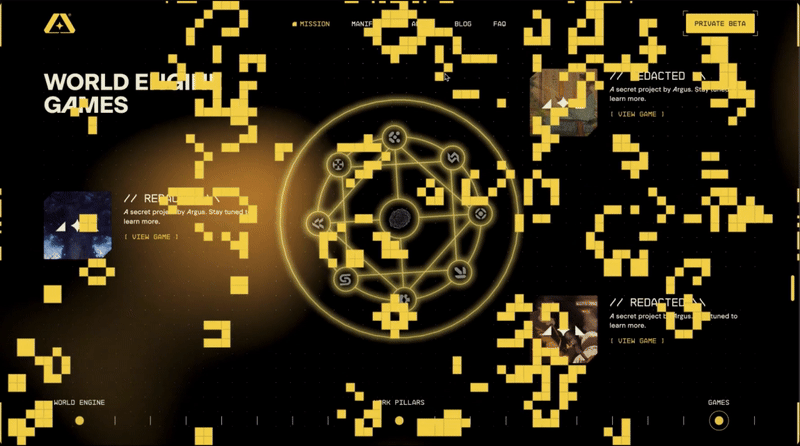
Animated cursors are becoming increasingly interactive and reactive to user actions, keeping visitors engaged and creating an enjoyable and dynamic user experience.
“The animated cursor trend brings a touch of playfulness to any web design,” says Marek. “It’s captivating to see the cursor transform and respond to user actions, creating an interactive and dynamic feel. We love them in all shapes and forms, from minimalistic round cursors to amazing thematic illustrations! This trend will definitely continue to surprise us in 2024.”
3. Text-Only Minimalism
Are you tired of being overloaded with visuals online? This trend is a welcome antidote to creative clutter. Inspired by traditional print publications, web designers have recently spotlighted minimalist layouts and typography, creating an innovative web experience that feels familiar yet unexpected.
“Text-only minimalism is all about simplicity and focus,” Marek explains. “It’s a breath of fresh air in a world cluttered with visuals. It looks clean, fresh, and stylish. Many designers may not realize that they can make a website stand out just by experimenting with typography and using it as a main accent.”
Copenhagen-based design agency B14’s website is an excellent example of the text-only minimalism trend. A simple sans-serif statement and lots of white space appear above the fold, while below the fold, the monochrome site springs into color and movement when an oversized cursor scrolls over each project.
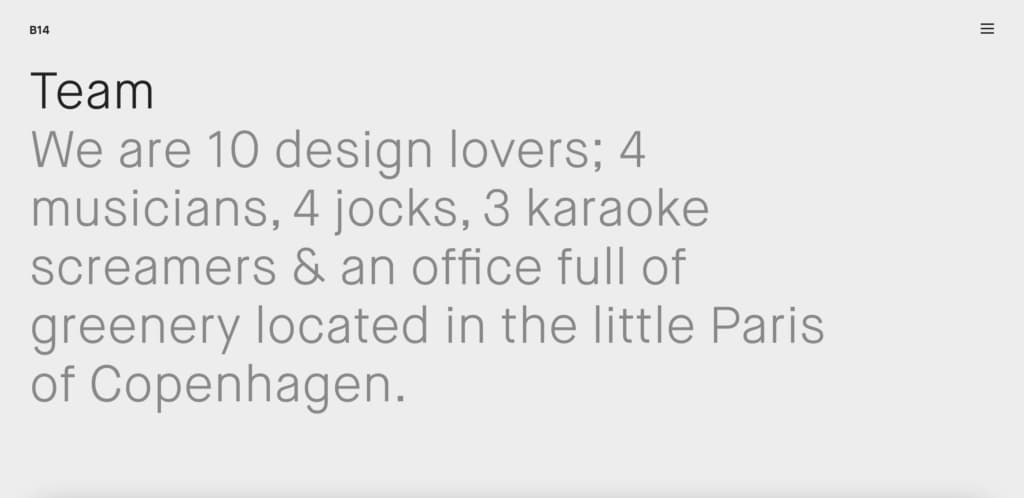
Its stripped-back, minimalist layout has been paired with added micro-interactions and parallax effects – where the website background moves faster than the foreground content – for added interest.
Taking this trend one step further, we’re predicting a major minimalism comeback as the web design industry continues to prioritize and adopt more accessible design practices. So, going forward, consider experimenting with typography as a prominent accent to make your designs a breath of fresh air in the cluttered digital space.
4. Personalization
Data Personalization
We’re all used to being shown similar products based on the items we’ve bought or placed in our cart. And that’s because brands and businesses have been harnessing the power of recommendation and suggestion technologies for years. However, this practice is now gaining traction in SAAS and no-code web tools.
“We’ve been harnessing the power of recommendation and suggestion technologies for a good while now,” says Ecem Keskin, Lead Designer at Jotform Apps. “You’ve probably seen this in action while online shopping, where you’re shown similar products based on the likes and interests of others who viewed the same items as you. We’re now seeing this trend across SAAS and no code tools, ensuring that every interaction with the user is unique and specific to users’ needs and interests. Users of no-code web design tools now expect completely personalized experiences from their toolkits, relying on them to create tailored applications that meet individual needs and preferences.”
AI Personalization
AI-generated content is also a big part of the personalization trend, with companies adopting chatbots and other virtual assistants to deliver a customized sales experience. Take Brooklyn-based beauty brand Amika, for example, which uses a virtual hair guru to help visitors to the website identify the products that are the right fit for them. After answering a few questions, the site experience shifts to include a custom badge alongside each product that matches the customer’s criteria.

“AI-generated content and personalized web experiences are on the rise,” says SplitBase. “Companies that use chatbots or virtual assistance see an improvement in user engagement as they can deliver a customized sales experience. We predict more companies will adopt this approach to bring further personalization, interaction, and guidance to the online shopping experience.”
5. AI-Generated Interactive Experiences
Unsurprisingly, we expect AI-generated design to dominate the scene in 2024. While there are fears that AI could take over web design and UX/UI design, don’t fret – AI’s ability to generate design-focused interactive experiences will simply empower creatives to do their jobs better and faster.
“AI-generated design will dominate the design scene in 2024,” says Assaf Parag, CEO of Opinion Stage. “A major sub-trend that will mature in 2024 is AI’s ability to generate complete design-focused interactive experiences, incorporating AI-generated designs, imagery, and video that will skyrocket the levels of user engagement and submissions.”
A fascinating example of these interactive experiences is AI-based engagement and data collection tools – or, more straightforwardly, quizzes, forms, and surveys. These are pieces of content where the user enters qualitative or quantitive data. Whether a global brand seeking feedback on its products or services, a Q&A designed to send a customer to the correct solution for their specific needs, or a quiz customized to any topic, these AI-generated experiences can be both useful and engaging.
6. Micro-Interactions
One web design trend continuing to dominate is micro-interactions, also known as mini-digital expressions. These are tiny, magical moments when a website responds to your every move, making the whole experience feel alive and engaging.
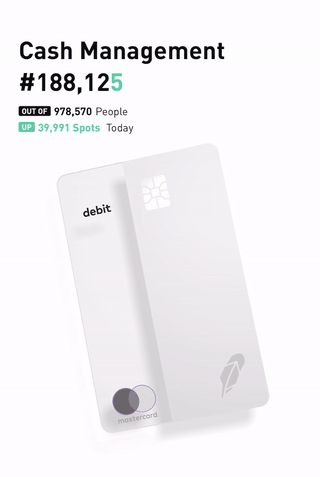
“Micro-interactions are huge in web design right now,” says Aygul Mehdiyeva, Digital PR at Booknetic. “Adding some human warmth into the online world is a great way to counterbalance the internet’s typically chilly and impersonal vibes.”

Of course, tech micro-interactions take place all the time – from swiping to deleting an email to progress bars. These micro-interactions make us feel in control of our inboxes and devices and are increasingly used to give us a sense of companionship. Just think of those little emojis that pop up when you respond to a DM: the animated expressions immediately enable the user to add a little personality to their post.
7. Immersive 3D Interfaces
We’ve looked at experimental navigation and immersive scrolling experiences, which feed into this next trend. We’re talking about fully rendered 3D worlds, which offer a super-lifelike and interactive browsing experience as they take the user on a digital journey.
“As technology advances, we may witness the rise of immersive 3D interfaces that offer a more lifelike and interactive browsing experience,” says Marek. “We feel like it can be a particularly exciting trend for industries like gaming, real estate, or virtual tourism.”
These immersive interfaces will invite the user to explore new surroundings – whether the realistic interior of a potential new home or the fantastical landscape of a multiplayer online role-playing game. And with the increased availability of AR and VR devices, web designers will continue to discover more incredible ways to showcase their work.
8. Psychology-Driven Product Design
An awareness of web accessibility has informed interface design in recent years, and we expect to see psychology-supported design movements continue to emerge in 2024.
But what does psychology have to do with web design? More than you might think. That’s because by better understanding people’s emotions, behaviors, problems, and motivations – or should we say, their psychology – we can make better design decisions and create better user experiences.
“Design decisions are often based on who our users are, their mental models, their goals, their motivations, and their problems,” says Ecem from Jotform Apps. “Learning about the psychological principles that govern human behavior and how users act, anticipate, and achieve can help web designers create a smoother user experience.”
Many users are unaware of the guiding forces shaping how they interact with products. But by looking at how users act, web designers can add value to products and ensure they have better adoption, engagement, and retention rates – in other words – the fundamental metrics that drive a digital product’s success.
As a result, designers are increasingly introducing elements such as micro-animations and micro-interactions to support and feedback on the actions taken by the user. These can include progress indicators or prompts to take action, like completing a level or finishing filling out their profile page. They also can include visuals intended to aid the decision-making process, such as price comparison tables and navigation menus with heads and subheads that stand out and make it easier to find what the user is looking for.
And that does it for the top web design trends we’re predicting for 2024! If you want to brush up on your web design skills, check out all the helpful tutorials and courses on Tuts+. Or, for more exciting trends content, check out the top graphic design trends and motion graphics trends for 2024!


